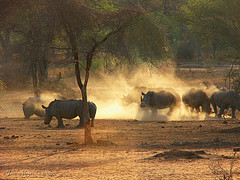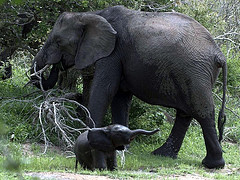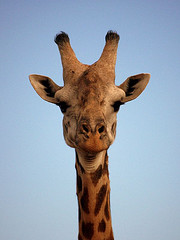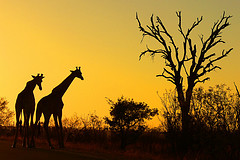1. Maasai Mara is visited by many people every year
Paco is already 300 km away from Nairobi, in Maasai Mara Game Reserve. He chose this place for his safari because he thought, 'If this park is visited by so many people every year, there must be a good reason'. A great variety of animals can be contemplated here, including the 'Big Five' (the lion, the elephant, the buffalo, the leopard and the rhino). Furthermore, many other species are seen in Maasai Mara: zebras, gazelles, cheetahs, hyenas, giraffes, crocodiles... Paco hopes to discover as much wildlife as possible. If they are lucky, some hippos might be found too.
In Nairobi, Paco joined a group of English-speaking tourists who were going to experience the same safari. When they arrived at the camp, their guide, James, told them about the schedules and about some interesting facts related to this park. For example, he mentioned that the famous film Out of Africa was filmed in the reserve, or that many National Geographic movies are recorded here every year, which is not surprising after seeing such breathtaking views and such varied flora and fauna. A few 'rules' were mentioned too: animals can't be fed but there is no problem in taking pictures from the safari bus.
After this short speech and after having some lunch, they left the camp to experience their first short tour. The following days, packed meals would be prepared and they would go further into the reserve for the whole day. For a first contact, this short tour will be enough.
James seemed to be very friendly. He helped them to spot the most amazing animals from far away and he shared his knowledge of them. His love for nature and Kenya was reflected in his eyes and in his words. Paco is enjoying this experience so much! He already knows it will be a trip of a lifetime. In the distance, a lion can be seen while it is devouring a zebra, which is distinguished by the black and white stripes. A few kilometres away, an elephant is eating leaves from a branch. Paco can't stop taking photos with his camera. What beautiful scenery!
 |
 |
| By Arno & Louise, C. Commons | By Arno & Louise, C. Commons |
 |
| By JaviC, C. Commons |
Verdadero Falso
Verdadero Falso
Verdadero Falso
Verdadero Falso
Remember that the passive voice is much more used in English than in Spanish. Is is frequently used in the news.
- If the subject of the sentence is the 'doer' of the action, the verb is in the ACTIVE voice.
- If the subject of the sentence is the 'receiver' of the action, the verb is in the PASSIVE voice.
Let's remember the structure of a passive sentence:
| SUBJECT | TO BE |
P. PARTICIPLE |
OBJECTS AND COMPLEMENTS |
(AGENT)* |
*The agent is not mentioned if it is not important or unknown.
| PACO | WAS |
SHOWN |
THE PARK |
BY THE GUIDE |
The active version would be: The guide showed Paco the park.
Let's practice a bit! Transform the following sentences into active or passive:
| ACTIVE SENTENCES | PASSIVE SENTENCES |
| Paco chose Maasai Mara for his safari. |
|
| This park is visited by many people every year. |
|
| A group of English-speaking people were going to experience the same safari. | |
| James told them about the schedules. |
|
| A few rules were mentioned. |
|
| Many National Geographic movies are recorded here every year. |
It is, in fact, a name in Swahili, the official language spoken in Kenya and some other countries in East Africa, which means 'journey' or 'expedition'. Interesting, isn't it?
 |
| By Arno & Louise, C. Commons |